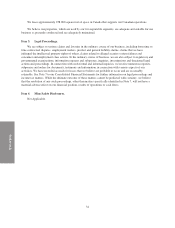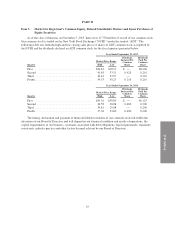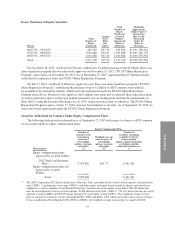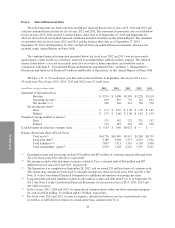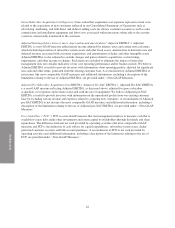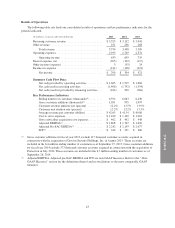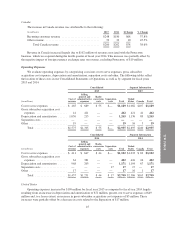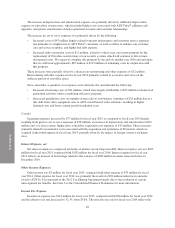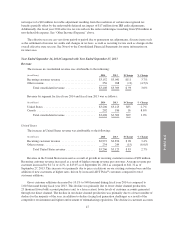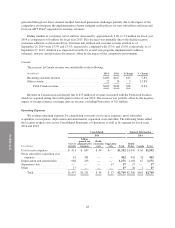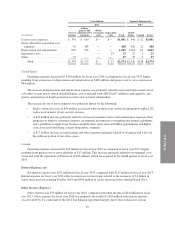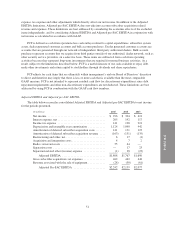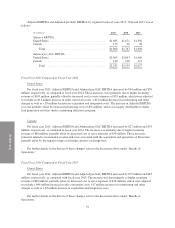ADT 2015 Annual Report Download - page 116
Download and view the complete annual report
Please find page 116 of the 2015 ADT annual report below. You can navigate through the pages in the report by either clicking on the pages listed below, or by using the keyword search tool below to find specific information within the annual report.
FORM 10-K
Gross Subscriber Acquisition Cost Expenses. Gross subscriber acquisition cost expenses represent certain costs
related to the acquisition of new customers reflected in our Consolidated Statements of Operations such as
advertising, marketing, and both direct and indirect selling costs for all new customer accounts as well as sales
commissions and installation equipment and labor costs associated with transactions where title to the security
system is contractually transferred to the customer.
Adjusted Earnings before interest, taxes, depreciation and amortization (“Adjusted EBITDA”). Adjusted
EBITDA is a non-GAAP measure reflecting net income adjusted for interest, taxes and certain non-cash items
which include depreciation of subscriber system assets and other fixed assets, amortization of deferred costs and
deferred revenue associated with customer acquisitions, and amortization of dealer and other intangible assets.
Adjusted EBITDA is also adjusted to exclude charges and gains related to acquisitions, restructurings,
impairments, and other income or charges. Such items are excluded to eliminate the impact of items that
management does not consider indicative of our core operating performance and/or business trends. We believe
Adjusted EBITDA is useful to provide investors with information about operating profits, adjusted for significant
non-cash and other items, generated from the existing customer base. A reconciliation of Adjusted EBITDA to
net income (the most comparable GAAP measure) and additional information, including a description of the
limitations relating to the use of Adjusted EDITDA, are provided under “-Non-GAAP Measures.”
Adjusted Pre Subscriber Acquisition Cost EBITDA (“Adjusted Pre-SAC EBITDA”). Adjusted Pre-SAC EBITDA
is a non-GAAP measure reflecting Adjusted EBITDA, as discussed above, adjusted for gross subscriber
acquisition cost expenses and revenue associated with the sale of equipment. We believe Adjusted pre-SAC
EBITDA is useful to provide investors with information on the operational profits from our existing customer
base by excluding certain revenue and expenses related to acquiring new customers. A reconciliation of Adjusted
pre-SAC EBITDA to net income (the most comparable GAAP measure) and additional information, including a
description of the limitations relating to the use of Adjusted pre-SAC EBITDA, are provided under “-Non-GAAP
Measures.”
Free Cash Flow (“FCF”). FCF is a non-GAAP measure that our management employs to measure cash that is
available to repay debt, make other investments and return capital to stockholders through dividends and share
repurchases. The difference between net cash provided by operating activities (the most comparable GAAP
measure) and FCF is the deduction of cash outlays for capital expenditures, subscriber system assets, dealer
generated customer accounts and bulk account purchases. A reconciliation of FCF to net cash provided by
operating activities and additional information, including a description of the limitations relating to the use of
FCF, are provided under “-Non-GAAP Measures.”
42




